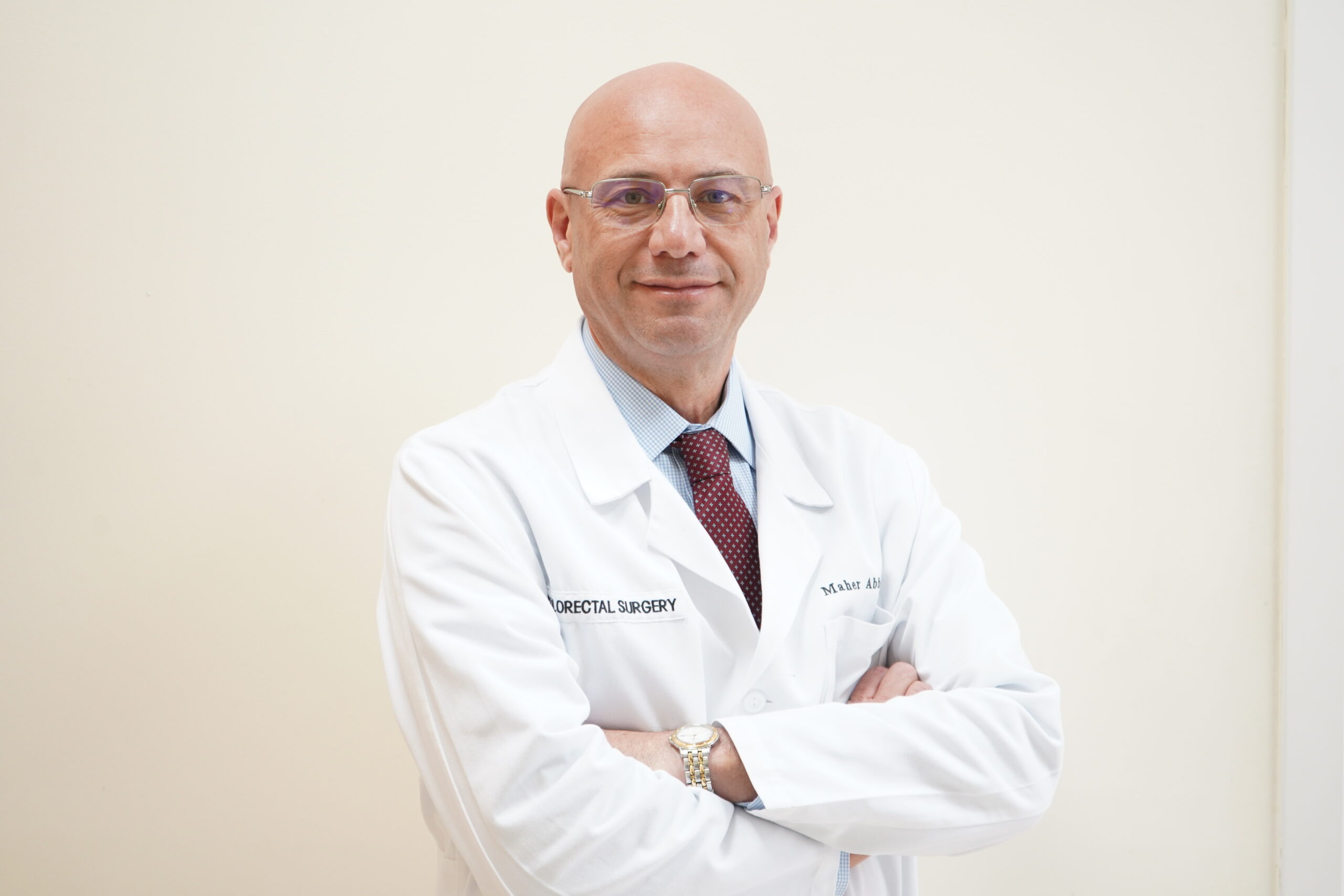What is a pilonidal hair cyst?
Pilonidal disease is a skin condition commonly referred to as a hair cyst. A collection of hair and bacteria are trapped in a cyst underneath the skin. The typical location is between the upper aspect of the buttocks around the tailbone area. Patients can present with a variety of symptoms including pain, swelling, redness, drainage of pus and/or blood from a skin opening [Figure 1]. Symptoms can be present from days to years. Occasionally patients can present with a painful abscess that requires immediate incision and drainage. The condition predominantly affects young people from teenage years into late adulthood. The main risk factor is excessive hair.

Figure 1 – Pilonidal hair cyst with small infected abscess
What are other skin disorders?
While pilonidal hair cyst is the most common type of skin cyst treated by a colorectal surgeon, other skin disorders can present in the anal area, buttocks, or groins. Hidradenitis suppurativa is a skin condition that begins as pimple-like bumps in areas like the buttocks, groins, and underarms. One or more areas can be affected in an individual patient. It is typically associated with inflamed and infected skin and hair glands. This condition can lead to extensive fistula tracts underneath the skin and scarring involving large areas [Figure 2]. Risk factors for this condition are obesity, diabetes, inflammatory conditions, and smoking.

Figure 2- Hidradenitis suppurativa involving both groins and lower abdomen
Other skin conditions that can affect the buttocks and anal area include skin infections related to yeast or viruses, benign lesions such as skin tags, sebaceous cyst or lipoma (fatty tumor), inflammation of the skin from excessive wiping and scratching (Pruritis Ani), precancerous lesions related to the HPV virus (human papilloma virus) including warts and dysplasia, or skin cancer.
How is the diagnosis made?
Pilonidal cyst disease is diagnosed on physical examination conducted by an experienced physician. If the diagnosis is unclear or there is suspicion for deeper disease, an MRI scan (magnetic resonance scan) is obtained. Furthermore, an MRI scan can be helpful in a previously treated patient who presents with pain in the area of surgery without any obvious skin abnormality. Under such scenario, the MRI scan can reveal if there is deeper recurrent disease.
Hidradenitis suppurativa is diagnosed on physical examination which is sufficient in the majority of patients. Similarly, most skin disease involving the buttocks or anal area can be diagnosed by visual inspection although in some cases a biopsy of the skin may be necessary to confirm the diagnosis. This is especially important in patients with prior HPV infection (human papilloma virus) or for suspicious skin lesions that are hard or ulcerated. Lesions involving the anus require visualization of the anus and rectum with either Anoscopy or Proctoscopy. If there is any concern for inflammatory bowel disease (such as Crohn’s disease) or cancer, Dr. Maher Abbas recommends a Colonoscopy procedure which is a procedure that allows Dr. Maher Abbas to look inside the colon.
What are the treatment options for pilonidal disease and other skin disorders?
Medical Treatment
Patients with infected cyst or skin are treated initially with antibiotics and hair removal, unless there is an abscess (collection of liquid infected pus) which requires surgical drainage. Patient with hidradenitis suppurativa require prolonged courses of antibiotics and smokers are advised to quit smoking. Yeast skin infections can respond to antifungal creams and in some cases oral pills. Other skin conditions may require biopsy for confirmation. Some precancerous lesions can be treated with special ointments with a combination of excision based on size and type of the lesions.
Surgical Treatment
Most patients with symptomatic hair cyst do benefit from surgical intervention. Dr. Maher Abbas personalizes the care of his patients with pilonidal disease based on a variety of factors. It is important to note that wound healing in the area can take time and can be challenging to manage especially in patients who are obese, have deep buttocks cleft, and/or are smokers. Postoperative wound care is as important as the surgical intervention itself. Several options are currently available (New Therapies for Pilonidal Disease):
- Incision and drainage of an abscess
- Laser obliteration and pit removal
- Unroofing and marsupialization
- Excision and flap closure of the wound
A major risk factor for non-healing or recurrence of pilonidal disease is hair infiltration of the wound. It is imperative that the patient is very diligent with hair removal from the wound and surrounding skin. Even after closure of the skin, the wound scar is soft and hair can poke through the skin and cause the disease to come back. Dr. Maher Abbas recommends hair removal during your recovery period and for at least 6 months after surgery until the scar of the wound is mature and complete (Pilonidal Wound Care).
While most patients with limited area of hidradenitis suppurativa can be treated medically, those with extensive and complex disease require surgical intervention. Options include opening the infected area to excision with skin grafting in some cases. For other skin disorders, excision and/or fulguration with destruction of lesions like warts or anal dysplasia (precancerous lesions) are options. In cases of cancer, additional non-surgical treatment maybe required including chemotherapy or radiation therapy.
If you would like to schedule a consultation with Dr. Maher Abbas, click here. If you have previously undergone any testing or operation for your condition, kindly bring all outside reports and imaging studies for Dr. Maher Abbas to review the day of your consultation.



